That Contentious Pipeline….
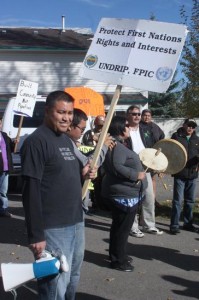
Carrier Sekani Tribal Chief Terry Teegee joins protestors outside the Joint Review Panel hearings into Enbridge’s proposed Northern Gateway pipeline Tuesday in Prince George
PRINCE GEORGE, Oct 14, 2012
There has been a lot of coverage of the proposed Enbridge pipeline in the news. What is surprising is that the current wind seems to be blowing against that mega-corporation. Global news often seems to take a biased “big business” perspective, but they must see the writing on the wall. BC Premier Christy Clark is slowly becoming more strongly opposed to the pipeline. She has stated from the outset that it is not an opposition based solely on financial issues. She is concerned with environmental issues as well. Enbridge is not looking strong globally, with spills taking a place of high visibility in the news (thanks Global!!) Hearings examining the technical specs and engineering have been taking place in Prince George, and so have the expected demonstrations. Carrier Sekani Tribal Chief Terry Teegee seems to be [temporarily] aligned with multiple levels of regional and provincial politicians. Teegee stated in the PGFreePress stated that the Joint Review Panel “is not taking the rights and title of First Nations people into account as it hears testimony and evidence from intervenors”. He also stated that “it baffles me why Enbridge would hang in there considering all the opposition to the project,” It does make me wonder several things:
- How many people are actually in support of this project?
- Can anyone/anything stop this project?
- Is Ottawa prepared to push this through regardless of the prevailing public opinion?
- Is the fact that First Nation concerns are not being addressed indicative of a larger problem, or is this an oversight?
See the article in its entirety at http://www.pgfreepress.com/news/173518791.html
October 14, 2012 No Comments
Revisiting my Oct. 1 Disney-Bashing blog
I blogged previously about the Disneyfication of The Indian in Children’s movies – with negative portrayals in films like Pocahontas and Peter Pan. I found an article today in a grade 11 textbook that states it in a different light. In a recent interview, Cree singer-songwriter 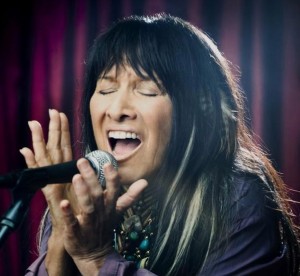 Buffy Sainte-Marie, from the Piapot region in Saskatchewan, stated “In Canada, Native people ourselves have overcome amazing odds—to become teachers and lawyers and tribal leaders and telecommunicators and well-known artists, in spite of everything trying to Pocahontasize us.” Academy Award winning Sainte-Marie received an honorary doctorate from UNBC in May 2012 (the latest of 6 honorary degrees) to add to her rich and diverse Curriculum Vitae. Find the interview at http://staff.gsacrd.ab.ca/~cmadill@gsacrd.ab.ca/FOV2-00065971/FOV2-00065974/FOV2-00065977/FOV2-000659A4/Between%20the%20Line,%20Unit%202.pdf
Buffy Sainte-Marie, from the Piapot region in Saskatchewan, stated “In Canada, Native people ourselves have overcome amazing odds—to become teachers and lawyers and tribal leaders and telecommunicators and well-known artists, in spite of everything trying to Pocahontasize us.” Academy Award winning Sainte-Marie received an honorary doctorate from UNBC in May 2012 (the latest of 6 honorary degrees) to add to her rich and diverse Curriculum Vitae. Find the interview at http://staff.gsacrd.ab.ca/~cmadill@gsacrd.ab.ca/FOV2-00065971/FOV2-00065974/FOV2-00065977/FOV2-000659A4/Between%20the%20Line,%20Unit%202.pdf
October 11, 2012 No Comments
Indigenous knowledge is a process….
UBC graduate student Amy parent mentioned her interview that Indigenous knowledge was a process, and that youth are at all different points on their journey towards their own understandings. My direction for my research project is going to be along these lines – how best to encourage success for Aboriginal Youth in the classroom, with an acknowledgement that indigenous knowledge is key to that success.
At my school we are preparing to commemorate Nov. 11th. We have the typical ceremony with poetry, some music by students, a speech by a veteran and maybe an MP or MLA. But we also have a segment of the ceremony set aside every year for our school’s First Nation students and Aboriginal Education (Ab.Ed.) teachers and youth workers. Each year is slightly different. One year they presented a drumming circle and traditional songs. Another year they read the roster of First Nation soldiers who had died in service to Canada, with drumming and a song underneath the reading. A few of the students had prepared a PowerPoint presentation. Another year saw short statements in all of the different languages the students had access to or skill in. Last year was very good, with a student dressed in his regalia dancing. Both his mother and grandfather had been dancers, and he was very proud to continue this tradition – he had even won a competition at a recent Powwow. The Ab.Ed. workers in the school work very hard to connect students to cultural knowledge, elder,s and traditions; and the Remembrance Day ceremonies are a very public way to show some of the connections they have been able to make.
October 4, 2012 No Comments
Disney’s [com]modification of The Indian
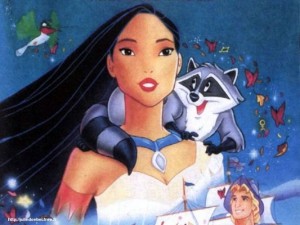 For many of us, Walt Disney cartoon movies have been one of the dominant experiences of childhood. Many children have enjoyed Dumbo, 101 Dalmations and Lady and the Tramp. But cartoon treatment of the American Indian has not been kind. The portrayal of Indians in 1953’s Peter Pan is hardly complimentary, and 1995’s Pocahontas is not much better. Surprisingly, the Native Peoples are shown to have a connection with the land and the White Man is seen as shown inept and clueless invaders. While this may be palatable to some, the character of Pocahontas still places herself in the power of the very white John Smith – a symbolic surrender of one people to another. This traditional connection to the land (see Marker, Michael, Teaching History from an Indigenous Perspective: Four Winding Paths up the Mountain) ” is “Disneyfied” and given the Western “mystical Indian” treatment with some cute little animal friends and an ancient grandmother tree that carries on conversations with our Indian Princess. Disney based this on true historical events, but the reality of this story is much less kind, with a 12 or 13 year old Pocahontas captured by the British, held in the boat for a year, and then transported back to England. But that wouldn’t have made as good a movie…
For many of us, Walt Disney cartoon movies have been one of the dominant experiences of childhood. Many children have enjoyed Dumbo, 101 Dalmations and Lady and the Tramp. But cartoon treatment of the American Indian has not been kind. The portrayal of Indians in 1953’s Peter Pan is hardly complimentary, and 1995’s Pocahontas is not much better. Surprisingly, the Native Peoples are shown to have a connection with the land and the White Man is seen as shown inept and clueless invaders. While this may be palatable to some, the character of Pocahontas still places herself in the power of the very white John Smith – a symbolic surrender of one people to another. This traditional connection to the land (see Marker, Michael, Teaching History from an Indigenous Perspective: Four Winding Paths up the Mountain) ” is “Disneyfied” and given the Western “mystical Indian” treatment with some cute little animal friends and an ancient grandmother tree that carries on conversations with our Indian Princess. Disney based this on true historical events, but the reality of this story is much less kind, with a 12 or 13 year old Pocahontas captured by the British, held in the boat for a year, and then transported back to England. But that wouldn’t have made as good a movie…
October 1, 2012 No Comments
Condo Developers vs. Musqueam
Vancouver: Sept. 29, 2012
Today was a good day for the Musqueam, but not such a good day for Vancouver’s Century Group. A final decision was made today in Vancouver to not issue another permit extension to the condominium developers. After human remains were found in the Marpole Midden site in January, the Musqueam Band have been keeping a long vigil to protect the ancient burial ground.
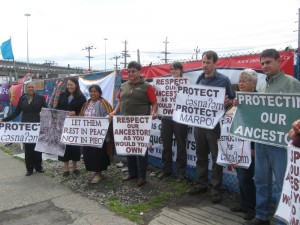
Picture from Straight.com. Amnesty International Canada meeting participants stand alongside Musqueam protesters. (Carlito Pablo)
Media and bias: Viewer beware!
This is a very tricky situation. Both sides of the issue seem understandable. It is difficult to view the situation without some element of bias. Depending on who is interviewed, or even which media personage files a report, one side or the other appears to be more or less reasonable. This is the power of the Fourth Estate; while supposedly presenting an unbiased view of purely objective facts, bias catches the consumer unawares and allows situations to become muddied and contentious.
Certainly the developers have spent a lot of money purchasing the land, engineering plans, and preparing to build this large-scale project. But the Musqueam have rights here: an ancient burial ground on their traditional lands should not be desecrated. The prospective developers Century Group wonder how or if they can be compensated for their loss. The Musqueam may be able to strike a deal to purchase the lands. See the story here http://bc.ctvnews.ca/musqueam-win-battle-against-marpole-development-1.977247
September 29, 2012 No Comments
Leading by example – First Nations Vice Principal
My school (Prince George Secondary School) has a new Vice-Principal this year, and she is Aboriginal. She joins the other two Vices; one of which is East Indian. I believe this demographic representation amongst the leaders in our school is both intentional and necessary. The East Indian VP was brought in a few years ago to try to help both staff and students adapt to the increasing number of East Indian students. There were cultural issues, specifically with the treatment of female teachers by the male students, that were unhealthy.
Similarly, the new Aboriginal VP has as one of her many duties to liaise with both First Nations non-Aboriginal students and staff and establish and maintain healthy relationships in the school. Over the last few years we have seen restorative justice and healing circles become a larger part of the school environment. I look forward to this year!
September 24, 2012 No Comments
BC Rivers Day 2012
I went yesterday (Sept.23) and checked out this event that is held annually at Fort George Park (Prince George). The weather was absolutely beautiful, and the food delicious. From the traditional acknowledgement of the area being part of the L’heidli Tenneh lands to the booths, food and enntertainment, there is a high First Nations presence. There is always a great line up of performers on the main stage at BC Rivers Day, and there are also educational/informational booths, interactive activities and food vendors. Check out the website at http://www.riversdaymusic.org The headline performer this year was Cheryl Bear, of the Nadleh Whut’en First Nation (Bear Clan) in the Carrier Nation located in northern British Columbia, Canada. You can check out her website at http://www.cherylbear.com/
September 24, 2012 No Comments
Sam’s weblog & research focus – targetted instruction
Many thanks to Janet for her link to the Marie Battiste YouTube video on “What is Learning Spirit”. ETEC 521 is part of the MET programme; but for me, it is a timely component. For the last 7 years I have been teaching in a school with a large number of First Nations students and families. For me this is a new dynamic; aside from a few friends and classmates in my youth, the First Nations student is somewhat of an unknown entity to me.
Marie Battiste states that there are many situations in which young people have not made it through school, and shut down and “people think they are stupid”. This is such a tragedy, and as an educator I cannot but help to feel guilt because I am part of the system.
My hope is that through this course I will develop a much clearer idea of what a First Nations student needs from the school system, and more specifically their teachers, in order to succeed. My research project and main weblog focus will be along the lines of developing targeted instruction – teaching strategies and components of my lesson plans – that will help aboriginal youth achieve greater success in my classroom.
September 24, 2012 No Comments
Aboriginal Choice School – Prince George, BC
Our High School – Prince George Secondary – has a large population of First Nations students from the Lheidli T’enneh and Carrier Sekani First Nations communities. We have a number of Aboriginal Education teachers and teacher assistants, funded by both School District #57 and the Aboriginal community. The students are exposed to many elements of their culture, and some of them only learn of these cultural activities once they get to High School. Out of the 1300 students in the school, there are several hundred students who First Nations, and a number of other students of mixed descent who have First Nations connections.
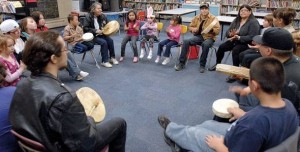 Prince George began an interesting initiative a few years ago. The school district in association with many other agencies set up an Elementary “Aboriginal Choice School” It began operations in 2010, and is the first Aboriginal school within the public school system in British Columbia.
Prince George began an interesting initiative a few years ago. The school district in association with many other agencies set up an Elementary “Aboriginal Choice School” It began operations in 2010, and is the first Aboriginal school within the public school system in British Columbia.
I believe that if this is the right way to proceed. In a ground-breaking partnership, Aboriginal Peoples control the education of their children. It will go a long way towards stemming the loss of culture and the corruption of the cherished values of the First Nations peoples. A tradition of Oral history, language, and connection to the land are focuses that will allow the students to retain their identities.
References
photo: Prince George Citizen, by Brent Braaten, April 12, 2011
September 23, 2012 No Comments
